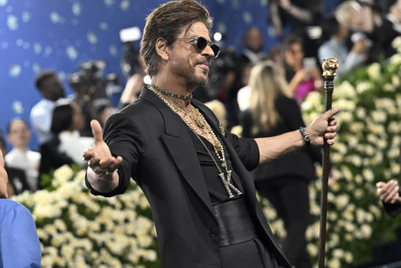
Colors India CMG 2008, a conference on colour trends in the Indian market, was recently held in Mumbai, organized by Freedom Tree Design and the Color Marketing Group. The focus of the seminar was to decode colour trends for the Indian consumer market.
Latika Khosla, director, Freedom Tree Design, pointed out the paradox in the Indian colour market: that in spite of its vibrant colour palette that the country has a heritage of, it is still evolving in terms of developing its own colour trends. At the moment, the country relies on global colour trends.
S. Srinivas, GM, Marketing, TVS Motors spoke about maximizing the use of colour as a brand tool and using it to drive brand image. The role of colour, as he pointed out, was integral to some categories, whereas in others, colour was not an important factor. Colour trends in FMCG products were defined by consumers' expectation of what that colour signified. The use of yellow, for instance, in most shampoo brands signified the inclusion of an ingredient such as egg in the product. For the automobile category, colour can make all the difference between a sale and an unsold inventory.
Citing TVS Scooty's use of colour as a marketing tool, Srinivas charted out the brand's communication journey from the Pink se panga campaign featuring Preity Zinta to the '99 colours and beyond' campaign, where colour was the differentiator that allowed Scooty customers to indulge their need for self expression and opt for any colour of their choice.
According to Srinivas, the right use of colours helped refresh the brand; was an expression of consumers' attitudes while at the same time, helping the brand to be noticed among consumers.
And before someone could jump to the conclusion that the only people buying into Scooty's colour proposition were women, Srinivas shared a slide during his presentation, of an unusual request from political party BJP, which wanted a certain combination of saffron and white for the 250 odd Scootys that had been specifically customized for their party workers in Gujarat. Srinivas concluded that colour was an opportunity that marketers needed to exploit.
Richa Puranesh, marketing manager, Lakme, Unilever talked about the importance of colour cosmetics in a market like India and the Indian woman's evolving comfort levels with a rapidly changing global colour palette. Puranesh said that the Indian cosmetic market was one of the most complex, by virtue of the sheer diversity of complexions that it had in its range.
India has always been a colour conscious market when it comes to cosmetics and women have generally coveted fair skin. Interestingly, Puranesh pointed out this mindset is changing. Extensive research by Lakme on such mindsets attitudes towards pointed to the fact that increasingly Indian women seemed more comfortable about their complexion.
Elaborating on the colour trends that the Indian woman is comfortable with and which Lakme needs to keep in mind for its brand communication, Puranesh explained how for the first time in its history, the cosmetic major approved a print campaign without retouching the skin shade.
Virendra Gupta, automotive business, Kansai Nerolac, spoke about the significance of colour as a marketing tool in the automobile market. Gupta pointed out that for the auto industry, colour was an important component of the business. Today these auto majors are extremely focused on the selection of colour based on a study of a consumer's lifestyle, demography and trends because the choice of wrong colours can lead to unsold inventories and consequent losses. Wrong colour can also lead to a shift in a brand's consumer base. As Gupta pointed out, most automakers who preferred to follow colour trends based on research, believed in refreshing a colour every six months within the same colour family. Toyota, Gupta pointed out , believes in always having on offer six shades for their models and believe that anything more would confuse the consumer and anything less would lead them to believe the brand did not have enough choices. They would also refresh two of the six colours every six to eight months.



.jpg&h=334&w=500&q=100&v=20250320&c=1)
.jpg&h=334&w=500&q=100&v=20250320&c=1)
.jpg&h=334&w=500&q=100&v=20250320&c=1)

.jpg&h=334&w=500&q=100&v=20250320&c=1)

.jpg&h=334&w=500&q=100&v=20250320&c=1)
.jpg&h=334&w=500&q=100&v=20250320&c=1)
.jpg&h=334&w=500&q=100&v=20250320&c=1)


.jpg&h=268&w=401&q=100&v=20250320&c=1)
.jpg&h=268&w=401&q=100&v=20250320&c=1)


.jpg&h=268&w=401&q=100&v=20250320&c=1)

